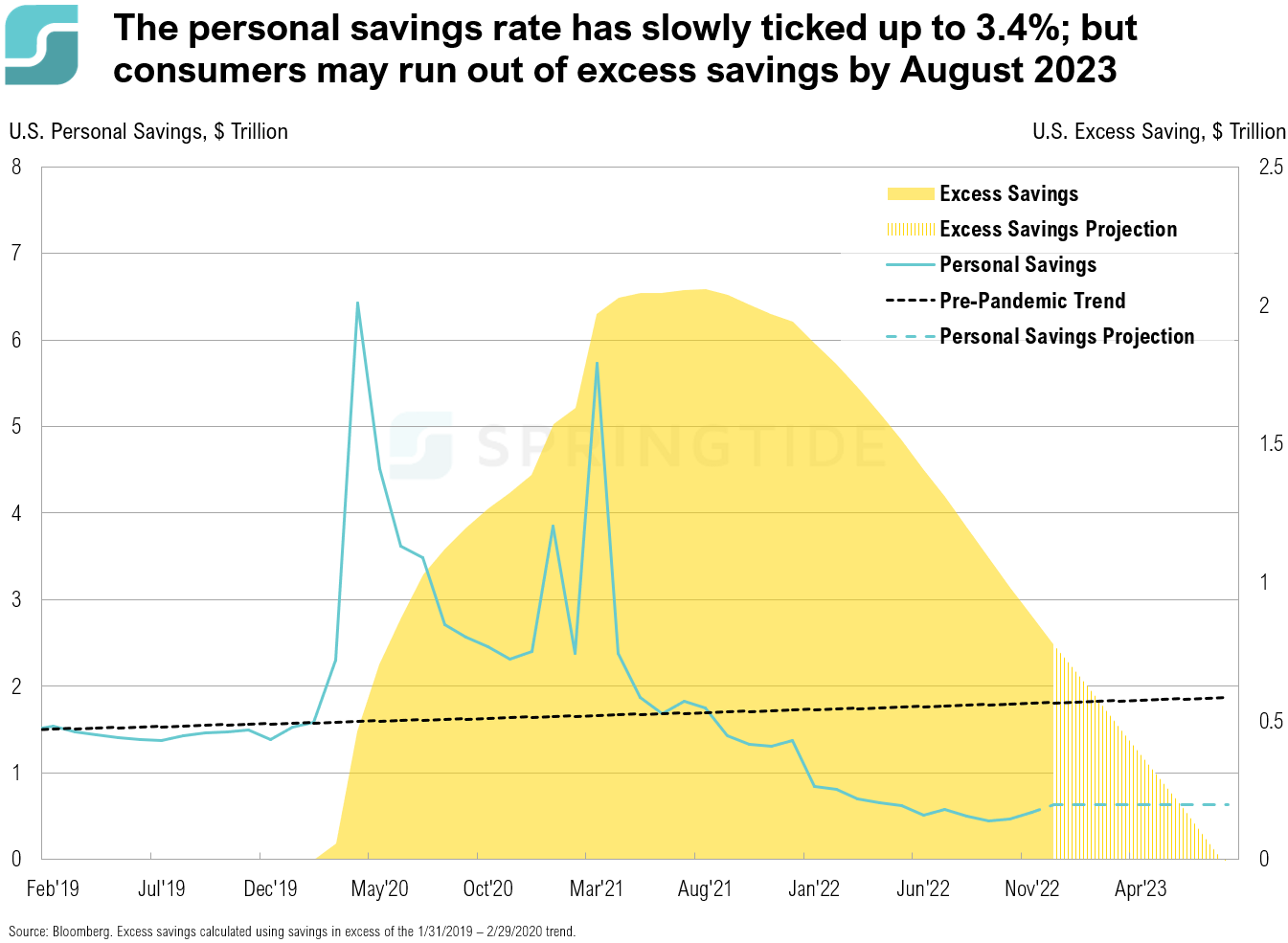SUMMARY
- During the COVID-19 pandemic, U.S. consumers accumulated more than $2 trillion in excess household savings, enabling them to spend and to continue spending even as inflation reached decade-high levels. In April 2020, personal saving rates reached an all time high of 33%. However, since then, it has steadily declined, reaching 2.4% in September 2022—the lowest levels since 2005. It slowly started ticking up after September, reaching 3.4% in December, albeit still well below the historical average of 8.9%.
- After more than two years of sustained elevated levels of spending, consumers may be starting to slow down. Consumer spending declined for two consecutive months, in November and December. Since 1959, spending has only ever declined over this peak holiday spending season three times—in 2001, 2008, and 2022.
- Evidence suggests that consumers may run down excess savings before the end of this year. Assuming a pre-pandemic spending rate and a savings rate in line with the most recent 3 months, our estimates show that consumers will run out of excess savings by the third quarter of 2023. However, if the recent slowdown in spending continues, it may enable consumers to stretch excess savings into 2024.

DISCLOSURES
The material shown is for informational purposes only. Any opinions expressed are current only as of the time made and are subject to change without notice. This report may include estimates, projections or other forward-looking statements; however, forward-looking statements are subject to numerous assumptions, risks, and uncertainties, and actual results may differ materially from those anticipated in forward-looking statements. As a practical matter, no entity is able to accurately and consistently predict future market activities. Additionally, please be aware that past performance is not a guide to the future performance of any investment, and that the performance results and historical information provided displayed herein may have been adversely or favorably impacted by events and economic conditions that will not prevail in the future. Therefore, it should not be inferred that these results are indicative of the future performance of any strategy, index, fund, manager or group of managers. The graphs and tables making up this report have been based on unaudited, third-party data and performance information provided to us by one or more commercial databases. While we believe this information to be reliable, SpringTide Partners bears no responsibility whatsoever for any errors or omissions.
Index benchmarks contained in this report are provided so that performance can be compared with the performance of well-known and widely recognized indices. Index results assume the re-investment of all dividends and interest. The information provided is not intended to be, and should not be construed as, investment, legal or tax advice. Nothing contained herein should be construed as a recommendation or advice to purchase or sell any security, investment, or portfolio allocation. This presentation is not meant as a general guide to investing, or as a source of any specific investment recommendations, and makes no implied or express recommendations concerning the manner in which any client’s accounts should or would be handled, as appropriate investment decisions depend upon the client’s specific investment objectives.
SpringTide Partners, LLC is a registered investment adviser with the Securities and Exchange Commission; registration does not imply a certain level of skill or training. For more detail, including information about SpringTide’s business practices and conflicts identified, please refer to SpringTide Partners’ Form ADV Part 2a and Form CRS at: https://www.springtide-partners.com/disclosures

